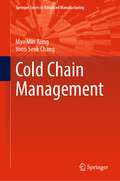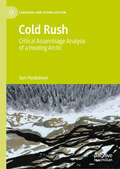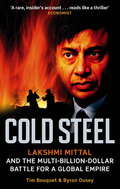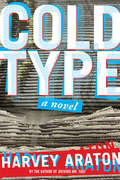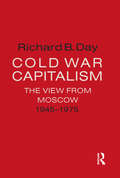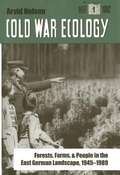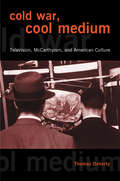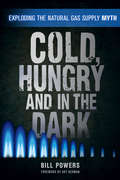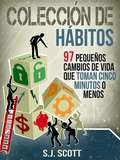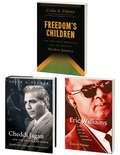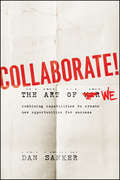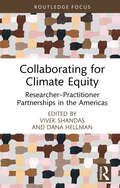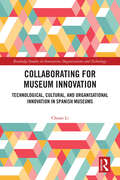- Table View
- List View
Cold Chain Management (Springer Series in Advanced Manufacturing)
by Myo Min Aung Yoon Seok ChangThis text helps readers to build a solid understanding of the key concepts in the management and operation of supply chains involving chilling, refrigeration or freezing. Emphasis is placed on environmental—particularly temperature—control as important in avoiding irreversible damage to product quality and safety and the resulting loss of profit and consumer confidence. The authors explain the important issues arising within the supply chain of perishable goods from production to consumption: topics that include planning and design, instrumentation and methods of implementation, and process monitoring and control.Reminding the student that cold supply chains are essential for the supply of products more various than foods, product-specific studies and examples are included for handling bananas and vaccines. The importance of product traceability and automation are highlighted.Cold Chain Management is a self-contained guide for graduate and final-year undergraduate students specializing in the study of supply chains, and their instructors. Researchers interested in logistics will find this book instructive when they wish to consider the particular problems associated with cold chains and anyone looking to begin a business in which refrigeration or freezing will be necessary will be well-served by reading this text.
Cold Hard Truth on Family, Kids and Money
by Kevin O'LearyFrom entrepreneur, TV celebrity and money expert Kevin O'Leary--a clear, no-nonsense personal finance guide that will help you build a secure future for yourself and for the ones you love. We all think carefully about the big decisions in our lives, like what career we want to pursue or who we want to marry. But few people spend enough time thinking deeply about the financial implications of their biggest life choices--and that's a serious money mistake. In his latest book picking up from where his last personal finance book left off, entrepreneur Kevin O'Leary presents another fifty common money mistakes. He provides all the tools you need to avoid making them and to keep more of your hard-earned cash in your bank account. A bestselling author, television star and immensely successful businessman, Kevin O'Leary understands the difficulties of raising a family while working to provide financial security. He walks you through every age and stage of life--from dating, to marrying, to raising a family, to retiring--offering critical advice about saving and spending, debt and credit, as well as tips on how to instill the value of money in every member of your family. After all, your family is your most important investment. Treat it like a precious long-term asset, and you and yours will enjoy a healthy, wealthy future.
Cold Iron and Lady Godiva: Engineering Education at Toronto 1920-1972
by Ian Montagnes Robin HarrisThe Faculty of Applied Science and Engineering at the University of Toronto is celebrating its 100th anniversary. This informal volume concentrates on the last half century. It examines the development of the Faculty and of its undergraduate and alumni organizations; the changing undergraduate scene since 1920, through a depression, the return of soldiers to university after two world wars, and the tempestuous sixties; the impact that the teaching staff and graduates of this one engineering school have had on their community and their nation through research and practice (including pioneer work in energy, transportation, construction, and industry); and ends with a look into the future of engineering education by the retiring dean of the Faculty, James M. Ham.
Cold New World: Growing Up in Harder Country
by William FinneganNew Yorker writer William Finnegan spent time with families in four communities across America and became an intimate observer of the lives he reveals in these beautifully rendered portraits: a fifteen-year-old drug dealer in blighted New Haven, Connecticut; a sleepy Texas town transformed by crack; Mexican American teenagers in Washington State, unable to relate to their immigrant parents and trying to find an identity in gangs; jobless young white supremacists in a downwardly mobile L.A. suburb. Important, powerful, and compassionate, Cold New World gives us an unforgettable look into a present that presages our future.A New York Times Notable Book of the YearA Los Angeles Times Best Nonfiction of 1998 selectionOne of the Voice Literary Supplement's Twenty-five Favorite Books of 1998From the Trade Paperback edition.
Cold Rush: Critical Assemblage Analysis of a Heating Arctic (Language and Globalization)
by Sari PietikäinenThis book is an original study of Cold Rush, an accelerated race for the extraction and protection of Arctic natural resources. The Northernmost reach of the planet is caught up in the double developments of two unfinished forces – rapidly progressing climate change and global economic investment - working simultaneously in tension and synergy. Neither process is linear or complete, but both are contradictory and open-ended. This book traces the multiplicity of Cold Rush in the Finnish Arctic, a high-stakes ecological, economic, and political hotspot. It is a heterogeneous space, understood as indigenous land within local indigenous Sámi people politics, the last frontier from a colonial perspective, and a periphery under the modernist nation-state regime. It is now transforming into an economic hub under global capitalism, intensifying climate change and unforeseen geo-political changes. Based on six years of ethnography, the book shows how people struggle, strategize, and profit from this ongoing, complex, and multidirectional change. The author offers a new theoretical approach called critical assemblage analysis, which provides an alternative way of exploring the dynamics between language and society by examining the interaction between material, discursive, and affective dimensions of Cold Rush. The approach builds on previous work at the intersection of critical discourse analysis, critical sociolinguistics, nexus analysis and ethnography, but expands toward works by philosophers Michel Foucault, Gilles Deleuze, and Felix Guattari. This book will be of interest to researchers on language, discourse, and sociolinguistics interested in engaging with social critique embedded in global capitalism and accelerating climate change; as well as researchers in the social and human sciences and natural sciences, who are increasingly aware of the fact that the theoretical and analytical move beyond the traditional dichotomies like language/society, nature/human and micro/macro is central to understanding today´s complex, intertwined social, political, economic and ecological processes.
Cold Steel: Lakshmi Mittal and the Multi-Billion-Dollar Battle for a Global Empire
by Tim Bouquet Byron OuseyWhen the world's two largest steel producers went head to head in a bitter struggle for market domination, an epic corporate battle ensued that sent shockwaves through the political corridors of Europe, overheated the world's financial markets and transformed the steel industry. Billions of dollars were at stake.At the heart of the battle were two men: Guy Dollé, Chairman and CEO of Luxembourg-based Arcelor, the world's largest steel producer by turnover and Lakshmi Mittal, a self-made Indian industrialist and the richest man in Great Britain. Only one could prevail . . .
Cold Type
by Harvey AratonHarvey Araton writes, with keen insight, of a time when power was ebbing fast from both newspapers and their unions. It's an especially bittersweet tale he tells of the people who had grown up in newspapers and unions, as they struggle to adapt to this evolving new order. And, of course, what makes this even more evocative, is that we're still trying to sort this all out. - Frank Deford, author of Everybody's All-American, NPR commentator"Father and son face their demons, each other, and a depressingly realistic publisher in a newspaper yarn that made me yell "Hold the Front Page" for Harvey Araton's rousing debut as a novelist." - Robert Lipsyte, author of An Accidental SportswriterIn times of change, American novelists return to old themes. In Cold Type-as in Arthur Miller's Death of a Salesman-a son and his father struggle to hold onto what they think is right. It's mid-1990s; and "cold type" technology, a.k.a. computerized typesetting, wreaks havoc among workers in the newspaper industry. A fabulously wealthy Briton buys the New York City Trib and immediately refuses to negotiate with the truck drivers' union. In solidarity, all the other blue collar unions take to the streets. Jamie Kramer is a reporter for the Trib. His father is a hardcore shop steward (unusual for a Jew in Irish-dominated unions) from the old day of "hot type," but who has become a typographer in a world he doesn't understand. His father expects Jamie not to cross the picket line. It would be an act of supreme disrespect. But that's not so easy for Jamie. His marriage has fallen apart, he desperately needs his paycheck for child support, and he needs to make his own life outside the shadow of his father.Harvey Araton is a celebrated sports reporter and columnist for the New York Times. He authored the New York Times best-seller Driving Mr. Yogi: Yogi Berra, Ron Guidry, and Baseball's Greatest Gift; plus When the Garden Was Eden: Clyde, the Captain, Dollar Bill, and the Glory Days of the New York Knicks. Araton also finds time to serve as adjunct professor in sports writing at Montclair State University in New Jersey where he lives.
Cold War Capitalism: The View from Moscow, 1945-1975
by Richard B. DayLooking back from the perspective of the mid-1990s, it is hard to believe that Soviet power for so long presented a threat and a challenge to the capitalist system. This book examines the assumptions of Soviet post-war economic theory and policy, traces the Soviets' analysis of Western economic development from the post-war period through to the easing of international relations, and explains why the Soviets themselves believed they were going to outperform the West.
Cold War Ecology: Forests, Farms, and People in the East German Landscape, 1945-1989
by Arvid NelsonEast Germany, its economy, and its society were in decline long before the country's political collapse in the late 1980s. The clues were there in the natural landscape, Arvid Nelson argues in this groundbreaking book, but policy analysts were blind to them. Had they noted the record of the leadership's values and goals manifest in the landscape, they wouldn't have hailed East Germany as a Marxist-Leninist success story. Nelson sets East German history within the context of the landscape history of two centuries to underscore how forest and ecosystem change offered a reliable barometer to the health and stability of the political system that governed them. Cold War Ecology records how East German leaders' indifference to human rights and their disregard for the landscape affected the rural economy, forests, and population. This lesson from history suggests new ways of thinking about the health of ecosystems and landscapes, Nelson shows, and he proposes assessing the stability of modern political systems based on the environment's system qualities rather than on political leaders' goals and beliefs.
Cold War, Cool Medium: Television, McCarthyism, and American Culture (Film And Culture Ser.)
by Thomas DohertyConventional wisdom holds that television was a co-conspirator in the repressions of Cold War America, that it was a facilitator to the blacklist and handmaiden to McCarthyism. But Thomas Doherty argues that, through the influence of television, America actually became a more open and tolerant place. Although many books have been written about this period, Cold War, Cool Medium is the only one to examine it through the lens of television programming. To the unjaded viewership of Cold War America, the television set was not a harbinger of intellectual degradation and moral decay, but a thrilling new household appliance capable of bringing the wonders of the world directly into the home. The "cool medium" permeated the lives of every American, quickly becoming one of the most powerful cultural forces of the twentieth century. While television has frequently been blamed for spurring the rise of Senator Joseph McCarthy, it was also the national stage upon which America witnessed—and ultimately welcomed—his downfall. In this provocative and nuanced cultural history, Doherty chronicles some of the most fascinating and ideologically charged episodes in television history: the warm-hearted Jewish sitcom The Goldbergs; the subversive threat from I Love Lucy; the sermons of Fulton J. Sheen on Life Is Worth Living; the anticommunist series I Led 3 Lives; the legendary jousts between Edward R. Murrow and Joseph McCarthy on See It Now; and the hypnotic, 188-hour political spectacle that was the Army-McCarthy hearings. By rerunning the programs, freezing the frames, and reading between the lines, Cold War, Cool Medium paints a picture of Cold War America that belies many black-and-white clichés. Doherty not only details how the blacklist operated within the television industry but also how the shows themselves struggled to defy it, arguing that television was preprogrammed to reinforce the very freedoms that McCarthyism attempted to curtail.
Cold, Hungry and in the Dark: Exploding the Natural Gas Supply Myth
by Bill PowersAn energy industry insider delivers hard truths about the reality of fracking. Conventional wisdom has North America entering a new era of energy abundance thanks to shale gas. But has industry been honest? Cold, Hungry and in the Dark argues that declining productivity combined with increasing demand will trigger a crisis that will cause prices to skyrocket, damage the economy, and have a profound impact on the lives of nearly every North American. Relying on faulty science, bought-and-paid-for-white papers masquerading as independent research and &“industry consultants,&” the &“shale promoters&” have vastly overstated the viable supply of shale gas resources for their own financial gain. This startling exposé, written by an industry insider, suggests that the stakes involved in the Enron scandal might seem like lunch money in comparison to the bursting of the natural gas bubble. Exhaustively researched and rigorously documented, Cold, Hungry and in the Dark:· Puts supply-and-demand trends under a microscope· Provides overwhelming evidence of the absurdity of the one hundred-year supply myth· Suggests numerous ways to mitigate the upcoming natural gas price spike The mainstream media has told us that natural gas will be cheap and plentiful for decades, when nothing could be further from the truth. Forewarned is forearmed. Cold, Hungry and in the Dark is vital reading for anyone concerned about the inevitable economic impact of our uncertain energy future.&“Powers&’s step-by-step dismantling of the abundance myth ought to alarm policymakers, corporate managers, investors, business owners, and concerned citizens alike.&”—Kurt Cobb, author of Prelude and contributor to The Christian Science Monitor
Colección De Hábitos. 97 Pequeños Cambios De Vida Que Toman 5 Minutos O Menos.
by Marcela Gutiérrez Bravo S. J. ScottColección de hábitos: 97 pequeños cambios que toman cinco minutos o menos es la última guía para desarrollar múltiples hábitos sin requerir demasiado de tu tiempo libre.Es fácil pensar en una docen de maneras para mejorar instantáneamente tu vida. Lo más probable es que estas ideas solamente tomarán unos cuantos minutos cada una. ¿El problema? Puedes estar sintiendo que no tienes suficiente tiempo para ellas. Una solución puede encontrarse usando el poder de la "colección de hábitos." La esencia de la colección de hábitos es tomar una serie de pequeños cambios (como comer una porción de fruta o enviar un mensaje te texto amoroso a la persona que te importa) y construir un ritual que sigues de manera diaria.La colección de hábitos funciona porque eliminas el estrés de tratar de cambiar muchas cosas a la vez. Tu meta es simplemente enfocarte en una sola rutina que toma alrededor de 15 y 30 minutos completar. Dentro de esta rutina hay una serie de acciones (o pequeños cambios). Todo lo que tienes que hacer es crear una lista de tareas y seguirla cada día. Esa es la esencia de la acumulación de hábitos.En el libro "Colección de hábitos" descubrirás 97 pequeños cambios de vida que toman cinco minutos o menos.Además de que descubrirás cómo crear una simple rutina (administrada por una lista de tareas) que repites diariamente. Aun más, descubrirás unas cuantas herramientas que te mantendrán motivado y consistente. Así que incluso si estás completamente estresado, encontrarás el tiempo y energía para completarestas acciones consistentemente.
Colgate-Palmolive Co.: The Precision Toothbrush
by John A. Quelch Nathalie LaidlerColgate-Palmolive Co. is considering how to position its new technological toothbrush, Precision. The case explores issues concerned with new product launches and requires students to do profitability analyses of different positioning alternatives.
Colgate-Palmolive Company: Marketing Anti-Cavity Toothpaste
by John A. Quelch Margaret RodriguezIn October 2013, Colgate-Palmolive Company, the world's leading oral care company, was about to launch its new Colgate Maximum Cavity Protection plus Sugar Acid Neutralizer toothpaste in Brazil. Oral care category accounted for 46 percent of Colgate's $17.4 billion sales worldwide in 2013. The new toothpaste was clinically proven to reduce and prevent cavities more effectively than toothpaste with the same level of fluoride alone. All major industry players, including Procter & Gamble, GlaxoSmithKline and Colgate itself, had long ago launched products with the maximum amount of fluoride allowed by Health authorities. Yet cavities remained a significant threat to public health in many countries, both developing and developed. As Suzan Harrison, Colgate's president of Oral Care, prepared to launch CMCP+SAN in Brazil, the world's third largest oral care market, her executive team was divided over the product's positioning and pricing. Should it be positioned as a basic product to maximize reach for its health benefits or as a premium product for consumers who sought superior cavity protection?
Colgate-Palmolive: Managing International Careers
by Philip M. RosenzweigColgate-Palmolive, the U.S.-based consumer products firm, has long emphasized international experience for its managers and has developed a comprehensive policy to manage expatriate assignments. The rise in dual-career families has made some managers reluctant to accept foreign assignments, causing Colgate-Palmolive to reexamine the way it manages international career development.
Colgate-Palmolive: Staying Ahead in Oral Care
by Rebecca Henderson Ryan JohnsonIn 2011, Colgate-Palmolive (Colgate) was the global leader in oral care, with a dominant market share lead in toothpaste and a growing presence in toothbrushes and mouthwash. However, the firm faced stiff competition with perennial rivals P&G increasing their focus on the oral care and emerging markets where Colgate had traditionally been untouchable. To defend its lead Colgate attempted to cover all fronts, leveraging brand equity, fostering close relationships with dental professionals, innovating in underutilized markets, using its global network to quickly move products to market and reinvesting steadily in its brand.
Colin Palmer’s Trilogy on Imperialism in the Caribbean, Omnibus E-Book
by Colin A. PalmerThis Omnibus E-Book brings together all three of Colin A. Palmer's books on the making of the modern Caribbean. Included are:Freedom's Children: The 1938 Labor Rebellion and the Birth of Modern JamaicaThis is the first comprehensive history of Jamaica's watershed 1938 labor rebellion and its aftermath. The rebellion produced two rival leaders who dominated the political life of the colony through the achievement of independence in 1962. Alexander Bustamante, a moneylender, founded the Bustamante Industrial Trade Union and its progeny, the Jamaica Labour Party. Norman Manley, an eminent barrister, led the struggle for self-government and with others established the People's National Party. Palmer sheds new light on the nature of Bustamante's collaboration with the imperial regime, the rise of the trade-union movement, the struggle for constitutional change, and the emergence of party politics in a modernizing Jamaica.Cheddi Jagan and the Politics of Power: British Guiana's Struggle for IndependencePalmer here tells the story of British Guiana's struggle for independence. The work details the rise and fall of Cheddi Jagan--from his initial electoral victory in the spring of 1953 to the aftermath of the British-orchestrated coup d'etat that led to the suspension of the constitution and the removal of Jagan's independence-minded administration. Bringing the larger story of Caribbean colonialism into view, this work shows how violence, police corruption, political chicanery, racial politics, and poor leadership delayed Guyana's independence until 1966, scarring the body politic in the process.Eric Williams and the Making of the Modern CaribbeanIn this first scholarly assessment of Williams (1911-1981), founder of the Republic of Trinidad and Tobago's first modern political party and the nation's first prime minister, Palmer explores his life as a scholar and politician and his tremendous influence on the historiography and politics of the Caribbean. Palmer focuses especially on a 14-year period of independence struggles in the Anglophone Caribbean, when Williams helped resolve regional disputes and promoted the creation of a pan-Caribbean federation.
Collab Capital
by Jeffrey J. Bussgang Mitchell B. Weiss Natalia RigolFounded in 2020 by Jewel Solomon Burks and her partners, Barry Givens and Justin Dawkins, Collab Capital was a new investment firm built on two pillars: first, it would identify and support ventures founded by Black entrepreneurs, a group underrepresented in venture-financed entrepreneurship. Second, Solomon and her partners had developed a novel financial instrument that incorporated both profit-sharing and equity to offer an alternative to traditional venture capital (VC) for startups. They believed their approach offered venture-level returns for investors while also closing a critical funding gap for Black entrepreneurs. But Limited Partners (LPs) were not yet convinced.
Collaborate with Your Competitors - and Win
by Gary Hamel C. K. Prahalad Yves L. DozCollaboration between competitors is in fashion. But the rise of competitive collaboration has triggered unease about its long-term effects. Companies that benefit most from competitive collaboration never forget that their partners may be out to disarm them. They know that harmony is not the most important measure of success; indeed, occasional conflict may be the best evidence of mutually beneficial collaboration. Successful companies also guard against competitive compromise by informing employees at all levels what skills and technologies are off-limits to the partner. Finally, they learn from their partners, viewing each alliance as a window on their partners' broad capabilities.
Collaborate: The Art of We
by Dan SankerThe hands-on guide for the new way to compete: Collaboration The 21st Century's counterpart to Sun Tzu's The Art of War, Dan Sanker's Collaborate: The Art of We gives a new generation of pioneering business enthusiasts a practical guide to capture tomorrow's opportunities. Globalization, technological advances, and cultural changes have opened the door for a new winning formula that combines traditional competition with contemporary collaborative business practices. Readers will change their mindsets and learn practical tools to tap into talent, overcome organizational obstacles, and create dramatic incremental value by collaborating between organizations. While most businesses are battling it out for crumbs of market share, the author gives inside examples of emerging leaders who are staking claim to larger pieces of the economic pie. Intellectual honesty and proof-of-concept permeate throughout; even the book's own foreword was entrusted to a collaborative group of over 35 individual participants, a first of its kind and one more concrete example of the power of collaboration. Sanker provides a comprehensive guide to collaboration from conception to implementation and analysis. He brings collaboration to life by: Exploring the opportunities created by dynamic online social tools being used by winning leaders Delving into examples from a plethora of traditional companies like Disney and McDonald's Inviting readers behind the curtains to see the inner workings of collaborative emerging growth companies like CaseStack, the author's company
Collaborating for Climate Equity: Researcher–Practitioner Partnerships in the Americas (Routledge Focus on Environment and Sustainability)
by Vivek Shandas Dana HellmanThis book explores the capacity of different stakeholders to work together and build urban resilience to climate change through an equity-centered approach to cross-sectoral collaboration. Urban areas, where the majority of the global population dwells, are particularly vulnerable to a myriad of climate stressors, the effects of which are acutely present in places and to communities that have been largely excluded from decision-making processes. Our need for working and learning together is at a critical threshold, yet at present, the process for and understanding of inter-sectoral collaborations remains a theoretical ideal and falls short of the broad appeal that many have claimed. Collaborating for Climate Equity argues that researcher–practitioner partnerships offer a promising pathway toward ensuring equitable outcomes while building climate resilience. By presenting five case studies from the United States, Chile, and Mexico, each chapter explores the contours of developing robust researcher–practitioner collaborations that endure and span institutional boundaries. The case studies included in the book are augmented by a synthesis that reflects upon the key findings and offers generalizable principles for applying similar approaches to other cities across the globe. This work contributes to a nascent knowledge base on the real-world challenges and opportunities associated with researcher–practitioner partnerships. It provides guidance to academics and practitioners involved in collaborative research, planning, and policymaking.
Collaborating for Climate Resilience (Giving Voice to Values)
by Ann Goodman Nilda MesaSupporters of environmental well-being and climate resilience are awakening and mobilizing – cities, states, business, academia, community-based organizations, and the military. They understand the imminent and long-term risks of climate deterioration and they are creating new structures beyond the top-down government policy efforts of the past. This highly practical book provides a clear insight into these collaborative solutions by real organizations in real time. It demonstrates how people from disparate fields and stakeholders cooperate to address climate issues at ground level and reveals how this can be undertaken effectively. Through case studies of key organizations such as the NYC Sustainability Office, Detroiters Working for Environmental Justice, IBM, and West Point Military Academy, readers will understand each party’s role in a cooperative enterprise and the means by which they support climate resiliency, their institutional goals, and their communities. Of particular value, the book illustrates the co-benefits of multi-party resilience planning: faster approval times; reduced litigation; ability to monetize benefits such as positive health outcomes; the economic benefits of cooperation (for example, capacity building through financing climate planning and resilience across public, private, and other sources of funding); and developing a shared perspective. The book will be of great interest to business managers, policymakers, and community leaders involved in combating climate change, and researchers and students of business, public affairs, policy, environment, climate, and urban studies.
Collaborating for Growth: Duane Morris in a Turbulent Legal Sector
by Annelena Lobb Heidi K. GardnerBy the late 2000s, the law firm Duane Morris had transformed itself from a growing U.S. law firm to a significant global player. The firm's uniquely collaborative organizational culture, which featured a transparent, data-driven compensation system, practice-group integration across multiple offices, and rewards for attorneys who shared responsibility, had contributed to the firm's success as it had expanded into new U.S. and international offices. Yet, amid a shaky world economy and an increasingly cutthroat legal profession, Duane Morris attorneys began to wonder-could collaboration survive as a firm value? Would the firm's culture help it continue to grow in the years ahead and bring in more sophisticated legal work, or would its lawyers inevitably start to keep work to themselves as the firm navigated an ever-more competitive environment?
Collaborating for Museum Innovation: Technological, Cultural, and Organisational Innovation in Spanish Museums (Routledge Studies in Innovation, Organizations and Technology)
by Chuan LiThis book is a fresh reflection on the study of museum innovation, with special attention paid to the enabling role of collaboration within the process. It sets out to capture the innovation dynamics of museums and explore to what extent and how collaborative arrangement can contribute to different types of innovative activities in the museum sector. The book presents a holistic review of museum innovation from multiple perspectives of, among others, economics, sociology, museology, and organisational study, while adopting an interdisciplinary approach to explore and analyse the innovation process and collaboration mechanism from the viewpoint of economics and sociology. The research presented is based on three interdependent aspects: first, a holistic definition and taxonomy of innovation in museum organisations; second, qualitative and quantitative analysis of the enabling role of collaboration in technological, cultural, and organisational innovation in museums; and third, multiple case studies for the identification and evaluation of effective collaboration models in different types of innovation. This is a problem-oriented study, which avoids focusing on those large and super museums that have been well-documented in prior studies; instead, it concentrates on small- and medium-sized museums, which account for more than 85% of museums in the world and have become the main resources of cultural tourism and the creative economy at a regional level. Primarily written for postgraduates, researchers, and academics interested in innovation study, innovation in cultural and creative sectors, and museum study, the findings may also have important implications on innovation management and policy for regional museums and public authorities.
Collaborating for Results: Silo Working and Relationships that Work
by David Ian WillcockWhere collaboration is needed and silo working creates barriers to achieving this, the cost to organisations can be very high: a lack of shared learning and innovation; unproductive conflict and stress; and significant financial costs due to programme failures. Collaborating for Results focuses on the human reasons for unproductive silo working in organisations, combining psychology with broader organisation development theory and practice. The central theme is that a visible agenda for building and maintaining working relationships across organisations is required by those seeking competitive advantage. It describes the contours of working relationships at three levels - individual, team and organisation - and proposes practical actions en route to collaboration and high performance. In doing so it acknowledges the complexity of people and relationships, the interrelationship of the three levels and explains the value of developing Open Teams at the heart of an integrated approach to business and organisational development. Organisation silos can feel like different countries, or even parallel worlds. Even in a single organisation, people in separate divisions or teams can talk a different language and have different work cultures that they each find difficult to understand and relate to. David Willcock’s Collaborating for Results reframes organisation culture to bridge the divide, develop working relationships that save time and money and improve organisation performance.
